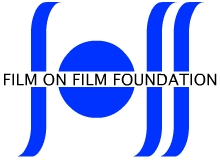
In the 1960's,
Jerry Schatzberg was already a legend in the New York scene. A highly sought-after photographer who crossed the boundaries of Fashion, Street, and Portrait, his work would contribute to the developing icon-status of, among many others,
Bob Dylan,
Andy Warhol,
Catherine Deneuve,
Roman Polanski,
Edie Sedgwick,
Aretha Franklin, the
Rolling Stones,
Jimi Hendrix, and a baby-faced
Fidel Castro. Photos by Schatzberg graced the covers of some of the most important pop-music albums of the era, including Dylan's
Blonde on Blonde. He owned some of Manhattan's hippest discotheques and threw many of the island's wildest parties. But despite sporting the credentials of an affluent scenester, Schatzberg's artistic sensibilities weren't rooted in the realms of fashion and wealth but rather were attuned to the pain and whimsy found in the private worlds of society's misfits, outcasts, and cast-offs. Although photography allowed him to touch upon this motif, the 1970's would offer him the opportunity to explore his themes in far greater depth, and in a new medium.
In the late 1960's, Hollywood--mirror to the nation--found itself creaking and cracking from the strain of the uncontrollable social revolution ripping through the country. The old formulas weren't working anymore, especially in the light of the on-going tragedy and melodrama broadcast nightly: Vietnam war carnage, assassinations, protests, riots. With the simultaneous end of the Production Code (a restrictive form of self-policing which allowed the film industry to evade government censorship), a new generation came of age determined to explore through cinema a rapidly changing world, and with a radically new sensibility. The breakthrough smash-success of Easy Rider, Bonnie and Clyde, and The Wild Bunch forced open the studio floodgates to the energies of this new generation, Jerry Schatzberg among them.
For much of the '60's, he'd been nursing a potential film project, based on his taped interviews with the model
Anne Saint Marie, about Lou Andreas Sand, a neurotic young woman swept up into fashion-industry success, only to be discarded when her time has passed. The fractured narrative--cutting at will between scenes of her youth, the "glory days" of her 20's, and living as a washed-up recluse in a rustic beach house, as well as images from her paranoid fantasies--would mirror the character's fractured psyche. While a sordid and scandalous history would be explored, the film would keep some distance from its butterfly-like subject, allowing a kaleidoscopic range of ideas and emotions to be suggested, but without allowing her to be pinned-down by ultimate conclusions. Schatzberg told his story to one of his camera's subjects, the young
Faye Dunaway, and, with her acting career just underway, Dunaway became obsessed with playing this role. Though Schatzberg had imagined casting multiple actresses to play Lou at different ages, he quickly realized that Dunaway, who had become his lover, was perfect to incarnate all phases of this tragic character.
Schatzberg recruited Carole Eastman (writer of Five Easy Pieces and uncredited contributor to the script of Petulia) to write Puzzle's script. He spent years in search of backing until finally, in 1970, he found patron saints in Paul Newman and Joanne Woodward, who were able to set up the production under their aegis at Universal.
Photographed by Adam Holender (
Midnight Cowboy), and co-starring
Roy Scheider and
Viveca Lindfors, the resulting film revealed an artist steeped in
Bergmanesque psycho-drama,
Alain Resnais-inflected lyrical montage, and acting technique centered in an improvisational quest for oblique emotional truth. Schatzberg was swiftly acclaimed internationally as having the most European sensibility of the new American auteurs. Buoyed by critical success, he was able to seize the Hollywood apparatus to continue to explore the realities of misfits who have slipped through the cracks of American society in such major '70's works as
The Panic in Needle Park (with Al Pacino),
Scarecrow (with Gene Hackman and Al Pacino--this film was co-winner of the
Grand Prix at Cannes, 1973), and
Sweet Revenge (aka
Dandy, the All-American Girl).
Now in his eighties and still working, Schatzberg has recently emerged from years of critical neglect within his home country, has been honored with retrospectives, and is receiving his due as one of America's great iconoclasts of film and photography.
Not on video!




